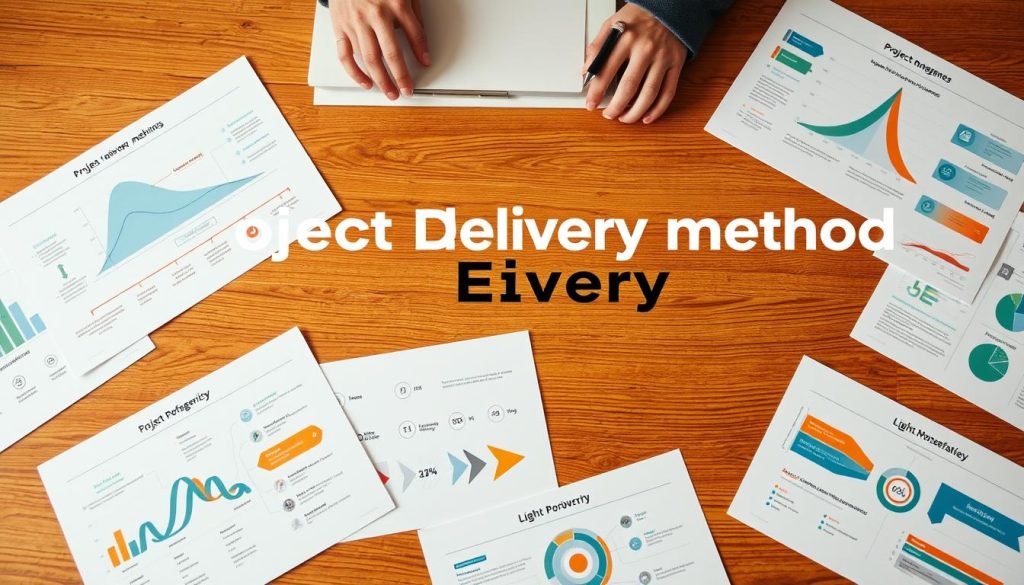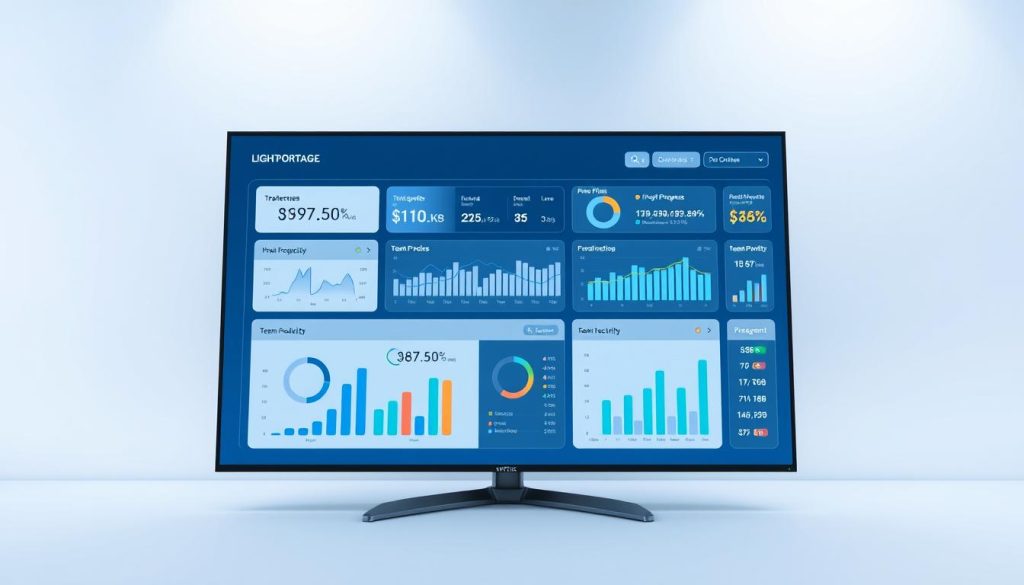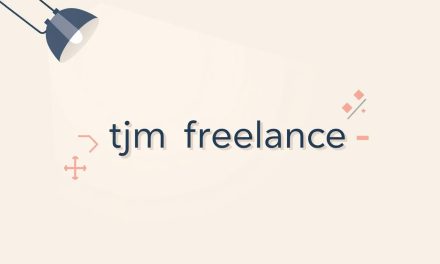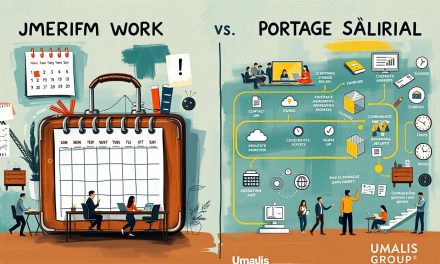We remember the first time a client asked for a tight timeline and vague scope. You felt the weight of expectations while juggling invoices, limited resources, and a small team of collaborators. That morning taught us a simple truth: clear structure turns uncertainty into steady progress.
This guide helps you get started by turning ideas into measurable outcomes. We explain how focused planning, smart resource allocation, and proven methods keep your work on track. You will see why a repeatable approach to a project builds trust and improves your win rate.
Across France, independent professionals use practical project management habits to protect time and cash flow. We balance structure with flexibility so you can adapt when conditions change yet still aim for success.
Table of Contents
Key Takeaways
- Define clear goals to reduce surprises and align expectations.
- Use repeatable methods to build credibility and faster wins.
- Protect your resources and time with disciplined planning.
- Engage your team—clients and partners—for steady momentum.
- Adopt basic project management habits to increase consistency and success.
Why Project Delivery Matters for Freelancers in France Today
Independent consultants in France must turn signed offers into measurable outcomes without stretching their margins. Effective project delivery turns scope and OKRs into results that respect schedule, cost, and quality.
We focus on four constraints—scope, time, cost, and quality—and treat them as a single balancing act.
Using clear KPIs, a simple change-control step, and early risk checks helps protect your margins and reputation.
Common traps include vague scope baselines, shifting priorities, and under-estimated resources. These often come from ad hoc communication across the team.
Document assumptions, dependencies, and acceptance criteria in your offer and at kickoff to reduce surprises.
Practical habits that keep work on track
- Weekly check-ins and visible task boards for transparency.
- Short progress notes to align clients and partners on status and change.
- Escalate risks early and agree trade-offs calmly when cost or schedule shifts.
- Use lightweight templates and delivery methods that fit your business scale.
« Sign-offs and scope checkpoints lock in the value you deliver and protect future references. »
What is project delivery?
Turning intent into value needs a simple, repeatable set of stages and checkpoints. We define project delivery as a complete process that converts a clear scope into business outcomes through structured phases, from initiation to closure.
From concept to completion, the process begins by setting goals and OKRs, then outlining scope, timelines, and resources. Planning breaks work into manageable tasks. Execution follows with risk checks, KPIs, and a lightweight change-control step.
From concept to completion: phases, process, and outcomes
- Definition: goals, acceptance criteria, stakeholders.
- Planning: timelines, roles, and simple risk logs.
- Execution & monitoring: weekly touchpoints, KPI checks.
- Closure: handover checklist, post-mortem, archives.
Collaboration and communication as the backbone of delivery
Clear, concise updates keep your team and client aligned. Run crisp weekly touchpoints and escalate with options, not surprises.
| Stage | Key Action | Outcome |
|---|---|---|
| Initiation | Define goals, OKRs, stakeholders | Shared expectations |
| Execution | Track KPIs, manage risks, QA | Validated results |
| Closure | Handover, post-mortem, archive | Lessons and credibility |
« A simple system for status, risks, and decisions preserves momentum without heavy tooling. »
Delivery Manager vs. Project Manager: Understanding the Difference
Roles that steer outcomes can look similar, yet their scope and authority differ sharply. Knowing the split helps you position services and agree governance early.
Role focus and authority
Project managers focus on a single initiative: scope, schedule, budget, risks, and stakeholder updates. They keep day-to-day work on track and report status to sponsors.
Delivery managers oversee outcomes across several efforts. They align initiatives to strategy, optimise cross-team resources, and remove systemic blockers.
When one person does both
As a freelancer you often wear both hats. Set clear governance, agree who approves trade-offs, and use a lightweight RACI so decisions remain visible.
| Aspect | Project Manager | Delivery Manager |
|---|---|---|
| Scope | Single initiative control | Portfolio-aligned outcomes |
| Decision authority | Operational within scope | Strategic and resourcing choices |
| Key tool | Risk log, status reports | Decision log, resource plan |
Tip: Frame your offer around outcomes, propose a simple control toolkit, and recommend a method that fits the client’s maturity.
« Clear roles reduce rework and protect margins. »
The Stages of a Delivery Project: From Initiation to Closure
Structured phases give small teams a reliable rhythm to move work forward. We outline a compact process so you can run each stage with clarity and minimum overhead.
Initiation starts with a short charter that lists scope, OKRs, stakeholders, and key assumptions. This creates a shared starting point and a simple resource breakdown.
Planning converts scope into a work breakdown and milestones. Allocate resources, set a budget, and sketch a basic gantt chart for visibility.
Execution focuses on task assignments, up-to-date documentation, and routine quality checks. Keep notes short and clear so team members know next steps.
Monitoring and Controlling uses a small set of KPIs, a light change-control step, and proactive risk mitigation to avoid surprises.
Quality Assurance defines acceptance criteria early and adds quick feedback loops to catch issues when they cost less to fix.
Closure hands over final artefacts, runs a post-mortem, and records lessons for the next effort.
| Phase | Core Action | Quick Outcome |
|---|---|---|
| Initiation | Create charter, name stakeholders | Aligned goals |
| Planning | WBS, resources, gantt chart | Visible schedule |
| Execution | Assign tasks, QA checkpoints | Working outputs |
| Monitoring | Track KPIs, manage change | Controlled risk |
| Closure | Handover, post-mortem | Lessons recorded |
« A repeatable rhythm lets you protect focus time and keep team members aligned. »
Building a Project Delivery Plan that Works
Begin by mapping goals, milestones, and who does what—this one step reduces ambiguity fast.
A lean plan is a compact roadmap that covers scope, timeline, resources, roles, and reporting. Define clear inclusions and exclusions, acceptance criteria, and OKRs before execution starts.
Scope, timeline, resources, RACI, and reporting cadence
Scope should state what is in and what is out. Add measurable acceptance criteria so sign-offs are simple.
Map a practical timeline and show dependencies with a simple gantt chart. That gives the team visibility and the client confidence.
Allocate resources realistically and list roles in a compact RACI. Set a reporting cadence that informs stakeholders without creating noise.
Creating a living plan: iteration and updates over time
Embed risk assessment, triggers, and mitigation options so control is proactive. Define quality standards and testing points for the design phase and build.
Use a lightweight communication system: channels, frequency, and escalation paths that team members can follow easily. Update the plan after key decisions and preserve a baseline for traceability.
| Element | What to include | Quick benefit |
|---|---|---|
| Scope | Inclusions, exclusions, acceptance criteria | Fewer disputes at handover |
| Timeline | Milestones, dependencies, gantt chart | Visible deadlines and clarity |
| Resources & RACI | Roles, allocation, responsibility matrix | Clear ownership for tasks |
| Risk & Control | Triggers, mitigations, decision points | Faster responses to change |
| Communication | Channels, cadence, escalation | Smoother stakeholder alignment |
- Run a quick checklist before you start execution: scope, OKRs, gantt, RACI, risks, and communication plan.
- Reference a suitable project delivery method when it helps clarity; adapt elements to fit your context.
- Keep the plan light, living, and visible to the team.
Master essential tools to streamline planning and collaboration.
« A living plan keeps decisions visible and reduces rework by making trade-offs explicit. »
Project Delivery Methods Explained

Method choice defines rhythm—steady phases, short sprints, or a tailored mix that fits constraints.
We define three approaches you will meet often and how to pick a project delivery method that matches scope certainty and stakeholder expectations.
Waterfall: sequential phases and predictable control
Waterfall moves through fixed phases with upfront planning and tight change gates.
Use it when scope is clear, documentation matters, and regulation limits ad hoc change.
Agile: sprints, adaptability, and customer value
Agile delivers in short increments. Teams adapt based on frequent feedback.
Use it when discovery, changing priorities, or customer validation matter more than strict plans.
Hybrid: tailor the method used to fit the work
Hybrid blends Waterfall milestones with Agile ceremonies. It keeps predictability where needed and flexibility elsewhere.
We recommend aligning the method with governance, risk tolerance, and team members’ capacity.
| Method | Strength | Best fit |
|---|---|---|
| Waterfall | Predictable control, clear documentation | High-certainty scope, regulated contexts |
| Agile | Rapid feedback, customer focus | Discovery, frequent change, small teams |
| Hybrid | Balanced predictability and adaptability | Mixed constraints, phased design construction |
« Match the method to stakeholder culture and the delivery system constraints to reduce rework. »
Construction-Focused Delivery Methods and When to Use Them
How you contract design and construction sets the tone for accountability, timing, and change management.
Design-Bid-Build: clarity, cost control, and longer schedules
Design-Bid-Build separates design and construction under distinct contracts. This gives clear roles and often competitive pricing because the building scope is final before work begins.
Expect longer timelines due to sequential phases and formal handovers between design phase and build.
Design-Build: single contract, speed, and coordination
Design-Build bundles design and construction with one contract. That alignment shortens time and reduces late changes.
Owners may still appoint an independent agent to protect their interests during design and approvals.
Construction Management at Risk (CMAR)
CMAR brings a builder in early as an agent during design, then as a vendor for construction.
This method can offer a guaranteed price and schedule while benefiting from early builder input to control cost and risk.
Multi-Prime and Integrated Project Delivery (IPD)
Multi-Prime hands separate contracts to multiple trade contractors. It keeps owner control but increases coordination work and potential cost friction.
Integrated Project Delivery binds owner, architect, and builder in a shared contract. IPD promotes collaboration, faster decisions, and aligned incentives through shared risk and reward.
Agent vs. Vendor: who advocates for the owner?
An agent represents owner interests and advises during the design phase, while a vendor is contracted to produce a defined outcome under fixed terms.
Choose an agent when independent oversight matters. Choose a vendor when you need a predictable scope and price.
« Match the method used to project size, risk tolerance, and stakeholder maturity to gain the most benefit. »
- Quick checklist to discuss with clients: contract model, coordination burden, cost vs time trade-offs, and who represents the owner.
- Recommend a delivery system that fits the building scale, regulatory context in France, and the client’s appetite for shared risk.
Lean Project Delivery: Mindset, Methods, and Team Performance
Lean thinking reshapes how teams plan, act, and learn to reduce waste and speed outcomes. It is a practical mindset you can apply in the design phase and on-site work to improve flow and value.
Six tenets guide daily habits: respect for people, remove waste, focus on flow, generate value, optimise the whole, and continuous improvement. These reduce delays, lower rework, and raise client satisfaction.
Tools that drive flow
- Last Planner System for reliable weekly commitments and smoother handoffs.
- A3 thinking to align the right people on concise, evidence-based decisions.
- 5S to keep spaces tidy, safe, and faster to work in.
- Set-Based Design to explore options during the design phase before locking choices.
Target Value Delivery aligns cost and value early so the project team avoids late compromises. Build high-performing teams by setting clear commitments, encouraging psychological safety, and holding brief accountability checkpoints.
« Lean is a way of working; Integrated Project Delivery is a contract that can enable it but is not required. »
Tools, Metrics, and Templates to Manage Delivery Like a Pro

A compact toolkit of metrics and templates lets independent consultants run work with the confidence of a larger firm. It focuses effort where it matters and keeps communication crisp.
Start small: one KPI dashboard, a risk register, and a decision log. These give clear visibility without heavy admin. Use the dashboard to show scope, milestones, and two to three leading indicators that matter to stakeholders.
KPI dashboards, change control logs, and risk registers
Track a handful of KPIs: progress vs milestone, open issues, and resource utilisation. Keep reports short and visual.
Design a change log that captures requests, impact on timeline and cost, and approval status. Use it as the single source of truth for control decisions.
Gantt charts and collaboration systems for the project team
Select a gantt chart view that shows dependencies and three upcoming milestones. Choose a view you can update in under five minutes each week.
Set up a collaboration system with channels, folders, and naming rules so the project team and clients can find files fast.
- Templates to use: status update, RAID log, acceptance checklist.
- Weekly rhythm: brief huddles plus async notes for team members.
- Risk focus: prioritise risks by likelihood and impact, then align mitigations to resources you actually have.
| Tool | Purpose | Quick benefit |
|---|---|---|
| KPI dashboard | Track progress | Faster decisions |
| Change log | Record requests | Clear approvals |
| Risk register | Mitigation plans | Fewer surprises |
Match tool choices to your method—Agile, Hybrid, or Waterfall—and keep a quarterly review to retire unused artifacts. This keeps your system lean and focused on outcomes rather than paperwork.
« Good templates and a simple system reduce noise and preserve time for the work that creates value. »
Accelerating Delivery Without Compromising Quality
When success is measurable and agreed, the team moves faster with confidence. Start by writing brief Conditions of Satisfaction that state acceptance criteria, performance thresholds, and key milestones.
Define success early: conditions of satisfaction and milestones
Agree on a small set of measurable outcomes before the first task. Use milestones as a steady heartbeat to show progress and reduce surprises.
Resource and cost optimization through cross-functional collaboration
Align skills to priorities and form cross-functional teams that resolve blockers without handoffs. This saves time and helps protect scarce resources.
Automation and streamlined processes to save time and budget
Introduce lightweight automation, templates, and smart defaults to compress lead times. Pair automation with regular KPI checks and embedded quality controls.
Practical checklist for faster, reliable sprints:
- Conditions of Satisfaction documented and signed.
- Three visible milestones with dates.
- One small cross-functional team with clear roles.
- Two automated steps (tests, reports) to cut manual work.
- Weekly KPI review and a brief quality check.
| Focus | Action | Benefit |
|---|---|---|
| Success criteria | Define acceptance early | Fewer reworks |
| Team composition | Cross-functional squad | Faster decisions |
| Process | Automate routine tasks | Lower lead time |
| Quality | Embed quick checks | Consistent standards |
Tip: Review and adapt your project delivery method after two sprints to keep what speeds you up and remove what slows you down.
« Small, visible steps build trust and preserve quality even when you move fast. »
Navigating Client Contexts in France
Selecting the right approach depends on procurement rules, risk appetite, and the timeline you must meet.
Public clients in France often require competitive bidding phases and strict documentation. Typical options include Design-Bid-Build, Design-Build, CM at Risk, Multi-Prime, and Integrated Project Delivery. Each method assigns roles (agent vs vendor), shapes approvals, and fixes when teams join the work.
Private clients usually have more latitude to choose collaborative models such as integrated project delivery to speed up design construction and innovation. They can trade some cost certainty for faster time-to-completion or better coordination.
When advising, surface schedule and cost implications early. Align your project management approach with procurement rules, required permits, and stakeholder approvals so estimates are credible and compliant.
- Checklist to validate selection: compliance, bidding risk, roles, timeline impact, and cost trade-offs.
- Recommend the method used that best balances clarity, agility, and oversight for the owner.
« Choose a system that fits procurement constraints and stakeholder appetite, not convenience. »
Conclusion
Small, repeatable habits—defined goals, short milestones, and quick checks—turn uncertainty into reliable results.
Build a firm foundation by stating outcomes clearly, setting realistic timelines, and using a light set of KPIs and change control. Keep QA simple and close each engagement with a tidy handover and a short post-mortem.
You can choose the method that fits your context—Waterfall, Agile, Hybrid, or construction-focused models—and adapt it with Lean routines to cut waste and speed flow.
To get started, template one plan, one status note, and one RAID log. Pick one small improvement this week for scope, cadence, or quality. Over time your team and partners will notice smoother coordination, faster decisions, and more trust.
Good processes compound: they help you deliver consistent value and win more strategic work in future projects.
FAQ
What distinguishes a delivery manager from a project manager?
The delivery manager focuses on end-to-end outcomes, stakeholder alignment, and service continuity. The project manager focuses on scope, schedule and budget within a defined effort. In smaller engagements a freelancer often assumes both hats, balancing execution tasks with long-term operational responsibility.
What are the main phases from concept to completion?
Typical phases are initiation (charter and stakeholder alignment), planning (work breakdown, resources, budget and timeline), execution (assignments, procurement and quality control), monitoring and controlling (KPIs, change control and risk mitigation), and closure (handover, post-mortem and lessons learned).
How can an independent professional avoid common pitfalls?
Clarify scope and acceptance criteria early, set realistic timelines, document decisions, use simple reporting rhythms, and define change-control rules. These steps reduce misunderstandings, scope creep and payment delays.
Which method should I choose: Waterfall, Agile or Hybrid?
Choose Waterfall for predictable regulatory or design-heavy work, Agile for evolving requirements and customer feedback, and Hybrid when you need predictable milestones alongside iterative delivery. Match the method to risk tolerance, stakeholder style, and contract terms.
When is Integrated Project Delivery (IPD) appropriate?
IPD fits complex, high-value builds where shared risk and collaboration unlock better outcomes. It works best when key firms—designer, constructor and owner—commit to shared goals, open information and aligned incentives.
What tools and metrics should a freelancer use to manage work effectively?
Use a lightweight KPI dashboard, a change-log, a risk register and a Gantt view for planning. Collaboration tools (task boards, shared docs) plus a standard acceptance checklist help maintain quality and transparency.
How do I build a living plan that adapts over time?
Start with a clear scope, milestones and resource map. Review at fixed cadences, capture changes in a single plan, and update estimates after each cycle. Keep stakeholders informed with concise status notes.
What quality assurance steps are essential for small engagements?
Define standards up front, schedule regular reviews, run simple tests or inspections, and collect client feedback at milestones. A short post-delivery review documents lessons for future work.
How do public-sector constraints in France affect method choice?
Public procurement often requires competitive bidding, formal deliverables and traceability. That favors more prescriptive, document-heavy approaches. Private clients may allow more flexible, collaborative methods.
How can I accelerate delivery without compromising standards?
Define success and minimum viable acceptance, optimize resources across tasks, automate routine work, and use focused review cycles. Prioritizing critical-path activities reduces time while protecting quality.
What is Lean Project Delivery and how does it apply to small teams?
Lean emphasizes value, flow and continuous improvement. Small teams apply it by removing waste, clarifying handoffs, using short planning cycles and adopting tools like the Last Planner System to coordinate work.
What role does a Gantt chart play in managing schedules?
A Gantt chart visualizes dependencies, milestones and resource allocation. For freelancers, a simplified Gantt helps set expectations, negotiate deadlines and spot scheduling conflicts early.
How should I approach cost and resource optimization?
Break work into deliverables, estimate effort and cost per deliverable, then look for cross-functional tasks and reusable assets. Negotiate realistic rates and include contingency for scope changes.
When should a freelancer use separate contracts for design and construction?
Use separate contracts (Design-Bid-Build) when clarity of scope and price control are priorities, or when regulatory requirements demand distinct responsibilities. Single-contract models suit faster, integrated delivery.
How do I document decisions and changes to limit disputes?
Record key decisions in short meeting minutes, use a change request form for scope adjustments, and maintain a single source of truth for deliverables and approvals. Regular, written confirmations prevent misunderstandings.
How can I prepare for future engagements while closing current work?
Run a concise post-mortem, extract lessons and reusable templates (scope, checklist, risk log), and update your service offers. These artifacts reduce ramp-up time for the next assignment.





